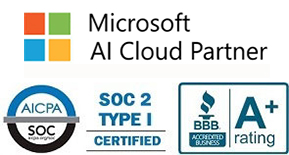IT Consulting | IT Support | Managed Services | New Jersey Computer Support Services

From ransomware attacks to cloud vulnerabilities, businesses of all sizes are under constant pressure to safeguard their data and systems. Traditional security models, or those that assume everything inside a network is trustworthy, are no longer enough.
Built on the principle of “never trust, always verify,” zero trust security is a modern framework designed for today’s digital, distributed, and high-risk environment. Let’s explore what it is, how it works, and why it has become essential for businesses everywhere.
Understanding the Zero Trust Security Model
At its core, zero trust security is about eliminating the assumption of trust. Instead of giving users and devices free access once they’re inside your network, zero trust requires verification every step of the way.
Key principles of zero trust include:
-
Continuous verification: Every user, device, and application is continuously authenticated and authorized.
-
Least privilege access: Users only get the minimum access necessary to perform their role.
-
Micro-segmentation: Networks are divided into smaller segments, limiting the damage an attacker can cause if they gain access.
This is fundamentally different from perimeter-based security models, which rely on firewalls and gateways to guard the network’s edge. In a zero trust environment, there is no “safe zone”; every request is scrutinized.
How Zero Trust Works in Practice
The strength of zero trust security lies in its adaptability. It’s not a single tool but a strategy implemented through a variety of technologies and policies.
Here’s how it plays out in real-world scenarios:
-
Identity verification for every user and device: Before accessing resources, users must prove their identity using credentials tied to both people and machines.
-
Continuous monitoring and risk-based access decisions: Access isn’t granted permanently; it’s reevaluated in real time based on behavior and risk factors.
-
Multi-factor authentication (MFA) and encryption: Even if credentials are stolen, MFA adds another layer of protection, while encryption secures data in transit.
-
Segregating sensitive resources: Critical data and applications are walled off from general access, reducing the chance of lateral movement within the network.
This approach ensures that trust is never assumed but constantly validated.
Why Zero Trust Has Become Essential
So why is zero trust security no longer optional? Several major shifts in the way businesses operate make it indispensable:
-
Remote and hybrid work environments
With employees accessing company resources from home, coffee shops, or on the road, the old “office firewall” approach simply doesn’t work. -
Increase in sophisticated cyberattacks
Hackers use advanced tactics like credential stuffing, phishing, and supply chain attacks. A zero trust model helps mitigate these by enforcing strict authentication and limiting access. -
Securing cloud applications and distributed networks
As businesses adopt SaaS platforms, cloud storage, and multi-cloud environments, data is spread across multiple locations. Zero trust ensures consistent security no matter where resources are hosted. -
Compliance and regulatory pressures
Frameworks like HIPAA, GDPR, and CMMC are pushing businesses toward stronger security postures. Zero trust helps meet these requirements by emphasizing verification, monitoring, and auditing.
Key Benefits of Implementing Zero Trust
Adopting zero trust security delivers several tangible advantages:
-
Reduced attack surface: By limiting access and segmenting networks, you minimize the pathways attackers can exploit.
-
Minimized breach impact: If a breach does occur, micro-segmentation and least privilege access prevent it from spreading widely.
-
Stronger compliance: Detailed logging, monitoring, and controlled access make it easier to pass audits and meet regulatory requirements.
-
Greater visibility: Zero trust provides a clear picture of who is accessing what, when, and from where, helping detect suspicious activity faster.
-
Enhanced protection for sensitive data: Intellectual property, financial records, and client information are better shielded from unauthorized access.
Steps to Begin Your Zero Trust Journey
Transitioning to zero trust security doesn’t happen overnight, but a phased approach can make it manageable. Here are some practical steps to get started:
-
Assess your current security posture: Identify weaknesses in your existing systems and processes.
-
Implement identity and access management (IAM) tools: Use solutions that enforce MFA, single sign-on, and role-based access.
-
Apply network segmentation and least privilege policies: Limit user permissions and separate critical systems from general access points.
-
Continuously monitor, test, and adjust: Cybersecurity isn’t static. Regularly review your policies, update technologies, and adapt to new threats.
By gradually layering in zero trust principles, you’ll build a stronger, more resilient defense without overwhelming your operations.
Strengthen Your Security with Zero Trust
Protecting your data has changed, and your defenses need to change with it. Zero trust security offers a proactive, future-proof approach to keeping your data, systems, and people safe. By adopting its principles, you reduce risk, ensure compliance, and gain the visibility needed to thrive in a connected world.
Ready to explore how zero trust can safeguard your business? Contact Integrated Computer Services today to learn how our team can help you design and implement a zero trust security framework.
SCHEDULE AN IT Assessment
About Us:
- 150+ 5-Star Google Rated IT Firm
- Microsoft Certified Cloud AI Partner
- SOC II Certified Managed Service Provider
- Better Business Bureau A+ Rated






